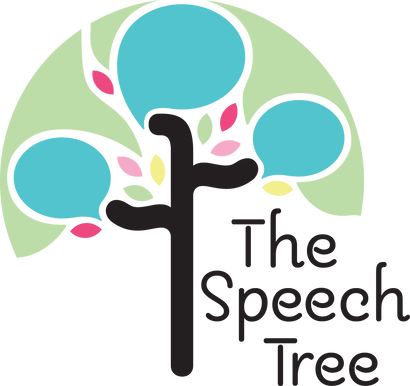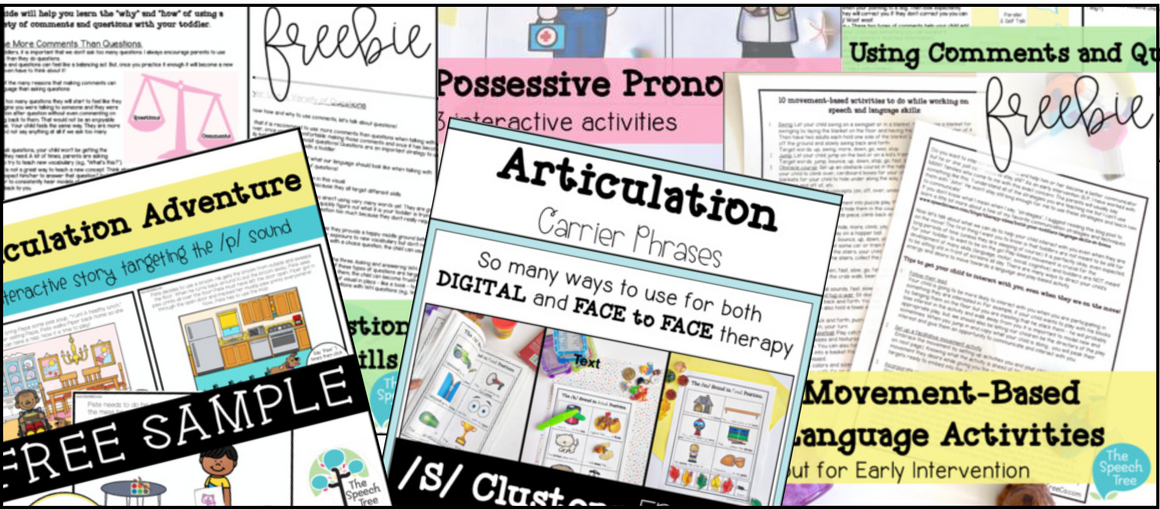Balancing Comments with Questions to Encourage Communication

Want to download this information in the form of a free, printable handout?
Click HERE to grab the handout!
Step One: Use More Comments Than Questions.

When talking with toddlers, it is important that we don’t ask too many questions. I always encourage parents to use 2-3x more comments than they do questions.
Alternating comments and questions can feel like a balancing act. But, once you practice it enough it will become a new habit and you won’t even have to think about it!
These are just two of the many reasons that making comments can encourage more language than asking questions:
1. If you ask your child too many questions they will start to feel like they are being tested. Imagine you were talking to someone and they were just asking you question after question without even commenting on what you were saying back to them. That would not be an enjoyable interaction for anyone.. Your child feels the same way. They are more likely to shut down and not say anything at all if we ask too many questions.
2. When all you do is ask questions, your child won’t be getting the language model that they need. A lot of times, parents are asking questions as a way to try to teach new vocabulary (e.g., “What’s this?”). But asking questions is not a great way to teach a new concept. Think about it… If your child doesn’t know what the word is, how do we expect him/her to answer that question? Instead, try commenting on the world around your child. This will allow him/her to consistently hear models of new nouns, verbs, adjectives, and they will be more likely to repeat these words back to you.
Step Two: Use A Variety Of Comments

Now that we know the importance of using comments, let’s talk about the different types of comments that can be used!
- Labeling - labeling verbs, nouns, adjectives related to what the child is doing or looking at.
- Exclamatory Words - Uh oh! Wow! Weee! Mooo! Vroom!
- Parallel & Self Talk - Parallel talk refers to talking out loud about what your child is doing and self talk refers to talking out loud about what you are doing!
- Feigning Confusion - Acting confused when you have your child’s attention to see if they will initiate communication For example, “I wonder where my spoon is” (when the spoon is near you in the eye sight of the child). Or, saying: “That’s a cat!” When your pointing to a dog. Then look expectantly at your child to see if they will correct you. If they don’t correct you you can say, Oops! Thats a dog! Woof woof.
- Expansion & Extension - These two types of comments help your child add more language. When your child says something you can expand it (model correct grammar) or extend it (add new information).
I love using repetition when commenting. For example, during bath time, you can repeat the word “washing” while changing up the body part. “Washing toes! Washing Legs! Washing tummy!”. I also love to make comments using a sing song voice which helps with imitation.
Example comments for:
- Bath Time: “Splish Splash!” / “You’re washing your toes!”. / “Hi ducky!” Put ducky under bubbles. “Uh oh! Bye Ducky!”.
- Car Rides: “Vroom, beep beep!” / “We are getting brother from school.” / “Wow! I see a plane in the sky.
- Meal TIme: “MMM, Yummy!” / Pointing to the child’s plate, “I see eggs. I see berries. I see bacon!” / Baby says, “eat”. You say: “You’re eating chicken! Mmm”.
Step Three: Use A Variety Of Questions

Now that we know how and why to use comments, let’s talk about questions!
You now know that it is recommend to use more comments than questions when talking with your little ones. However, once you feel comfortable making those comments and once it has become a part of your daily habit, it is time to revisit questions! Questions are an important strategy to use when working on improving language skills with a toddler.
This chart above shows a breakdown of what our language should look like when talking with toddlers… Mostly comments, with a mix of questions!
There are 3 different question types shown in this visual.
It is important to ask a variety of questions because they all target different skills.
-Yes/No questions are great for little ones who aren’t using very many words yet. They are good for moments of frustration when you just need to quickly figure out what it is your toddler is trying to communicate to you. I don’t love using yes/no question too much because they don’t really require much language from the child.
-Choice questions are my personal favorite because they provide a happy middle ground between the other two types of questions. Choice questions offer exposure to new vocabulary but don’t require as much language as an open-ended WH question. Also, with a choice question, the child can usually respond via a gesture if they do not yet have words.
-WH Questions require the most language skills out of the three. Asking and answering WH questions is an important skill that little ones must learn. However, if these types of questions are targeted before the child has the language skills needed to answer them, the child can become frustrated. It is a good idea to first introduce WH questions with some sort of visual in place - like a book - to help the child be able to answer it. You can also combine choice questions with WH questions (e.g., Who is in the tree, the cat or the dog?).
Leave a comment
Comments will be approved before showing up.




